11 Most Famous And Traditional Food Items Of Maharashtra
By: Priyanka Maheshwari Fri, 30 June 2023 5:13:03
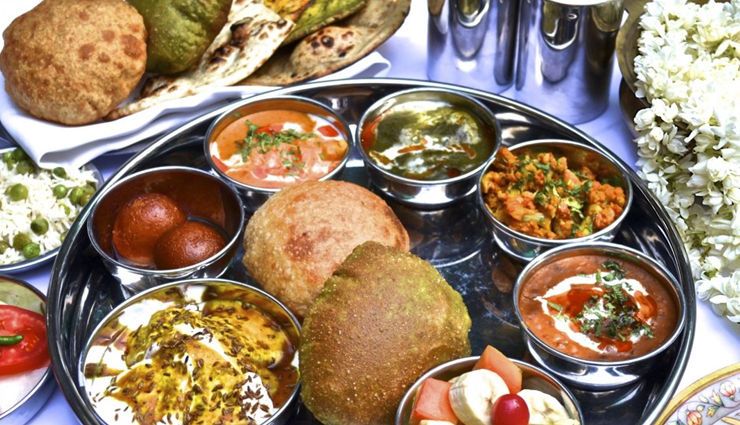
Maharashtra, a state located in western India, has a rich and diverse culinary heritage. The cuisine of Maharashtra is known for its bold flavors, aromatic spices, and a wide variety of vegetarian and non-vegetarian dishes. The cuisine reflects the diverse cultural influences and regional specialties found within the state. In this article, we will explore 11 famous dishes from Maharashtra that are a must-try for any food enthusiast.
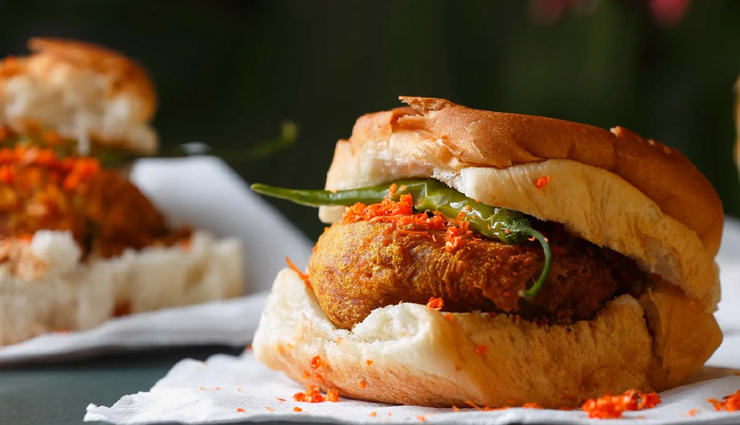
# Vada Pav
Vada Pav is a popular street food snack that originated in Maharashtra, India. It is often referred to as the "poor man's burger" due to its affordability and widespread popularity among people from all walks of life. The highlight of Vada Pav is the batata vada, which is a spicy potato fritter. It is made by mashing boiled potatoes and mixing them with a blend of spices such as turmeric, chili powder, ginger, garlic, and mustard seeds. The mixture is then coated in a chickpea flour batter and deep-fried until golden and crispy. Vada Pav is typically served with three types of chutneys: green chutney, garlic chutney, and tamarind chutney. The green chutney is made from coriander leaves, mint leaves, green chilies, and spices, providing a fresh and tangy flavor. The garlic chutney is a fiery blend of roasted garlic, dry red chilies, and spices, adding a spicy kick. The tamarind chutney, although optional, can be added for a sweet and tangy taste.
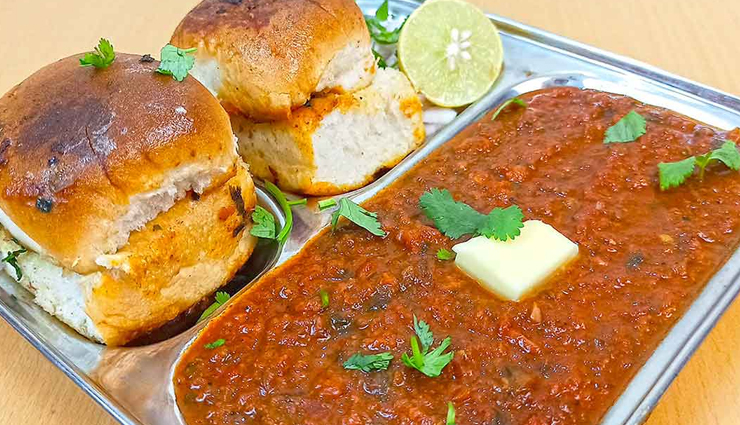
# Pav Bhaji
Pav Bhaji is a beloved street food dish that originated in Maharashtra, specifically in Mumbai. It has since become popular across India and even internationally. Pav Bhaji is commonly found at street stalls, food carts, and fast-food joints across the state, particularly in Mumbai. The main component of Pav Bhaji is a spicy vegetable curry called "bhaji." It is made by mashing a medley of vegetables like potatoes, cauliflower, peas, carrots, and bell peppers. The vegetables are cooked with a blend of spices, including turmeric, red chili powder, cumin, coriander, and pav bhaji masala. The bhaji is typically rich and flavorful, with a tangy twist from the addition of lemon juice.

# Misal Pav
Misal Pav is strongly associated with Maharashtra, especially in cities like Pune and Mumbai. It represents the local flavors and culinary traditions of the state. The combination of spicy sprout curry, tangy toppings, and soft pav creates a burst of flavors in every bite. The spice level can vary from mild to fiery, allowing individuals to adjust it according to their preferences. Misal Pav is commonly found at street food stalls, small eateries, and traditional Maharashtrian restaurants. It is often enjoyed as a breakfast or brunch option, and its affordability and deliciousness make it a favorite among locals and tourists alike.
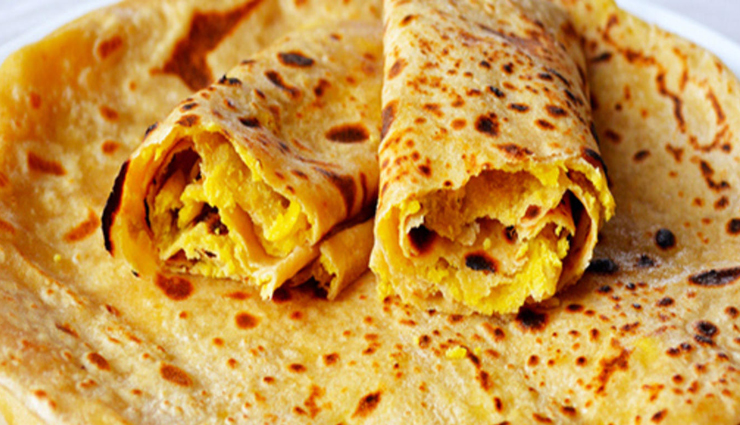
# Puran Poli
Puran Poli is often prepared during special occasions and festivals, making it a cherished part of the culinary traditions in Maharashtra. It is believed to be an offering to deities during religious rituals and celebrations. Puran Poli is a sweet dish that combines the goodness of lentils (chana dal) with the natural sweetness of jaggery. It is a rich source of protein, fiber, and essential minerals, making it a nutritious indulgence. Puran Poli represents the culinary heritage and traditions of Maharashtra. It has been passed down through generations, with each family having its own unique recipe and method of preparation.
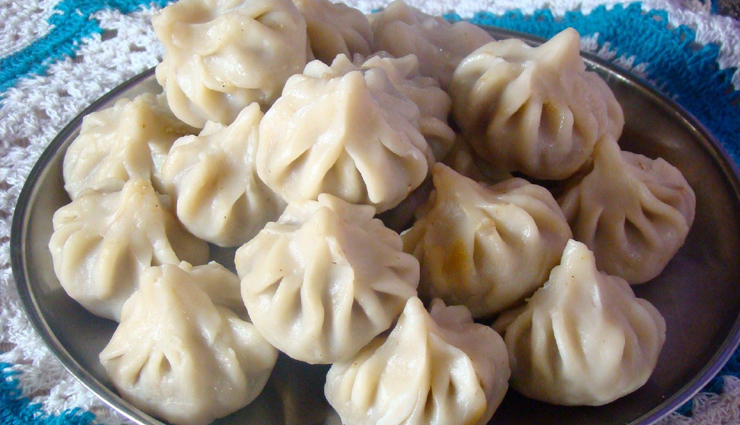
# Modak
Modak is considered to be Lord Ganesha's favorite sweet. It is believed that offering Modak to Lord Ganesha during Ganesh Chaturthi pleases him and brings good fortune and blessings. Modak is an integral part of the Ganesh Chaturthi festivities in Maharashtra. It is prepared and shared among family and friends as a symbol of joy and celebration. The shape of the Modak is said to represent Lord Ganesha's head or his elephant trunk. It is considered auspicious and is offered as a gesture of reverence and devotion. The outer shell of Modak is made from rice flour or wheat flour dough. The dough is kneaded with water and a pinch of salt to achieve a smooth and pliable consistency. The filling of Modak is traditionally made from freshly grated coconut and jaggery. The mixture is cooked on low heat until the jaggery melts and binds with the coconut. Cardamom powder and sometimes nutmeg or saffron are added to enhance the flavor of the filling. Modak is a traditional Maharashtrian sweet that has been passed down through generations. Families have their own unique recipes and methods of making Modak, contributing to its cultural heritage.

# Kolhapuri Chicken
Kolhapuri Chicken is a famous and flavorful chicken dish that originated in the city of Kolhapur in the state of Maharashtra. Kolhapuri Chicken is characterized by its bold and robust flavors. It is known for its spicy nature, achieved through the use of a special Kolhapuri masala, which is a blend of various spices such as red chili powder, black pepper, cumin, coriander, cloves, cinnamon, and more. The masala imparts a unique and fiery taste to the dish, giving it its distinctive flavor profile. Kolhapuri Chicken is made with chicken pieces, typically bone-in, which are marinated in a mixture of spices and yogurt. The marination helps in tenderizing the meat and infusing it with flavors. The chicken is then cooked in a spicy gravy made with the Kolhapuri masala, onions, tomatoes, and other aromatic ingredients. The slow cooking process allows the flavors to develop and the chicken to become tender and succulent. Kolhapuri Chicken is a significant part of the culinary heritage of Maharashtra, particularly in the Kolhapur region. It represents the rich and diverse food culture of the state, showcasing the love for bold flavors and spice. The dish is often prepared during special occasions, celebrations, and festive gatherings, highlighting its cultural significance.
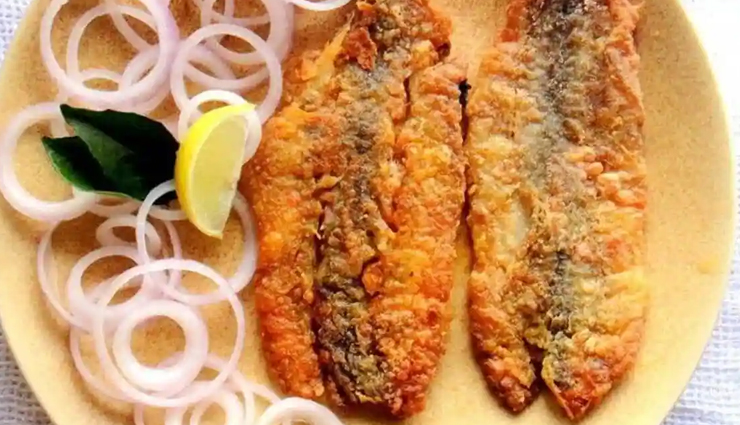
# Bombil Fry
Bombil, also known as Bombay Duck, is a small, silver-colored fish with a distinct shape. It is commonly found in the Arabian Sea and is highly sought after for its delicate and unique taste. Bombil has a soft and flaky texture, making it perfect for frying. Bombil Fry holds cultural significance in Maharashtra, especially in the coastal communities. It is often prepared during festivals, special occasions, and family gatherings, symbolizing the coastal culinary traditions and the love for seafood in the region. Bombil Fry is known for its crispy exterior and flavorful seasoning. The fish is typically coated with a mixture of spices and marinated briefly to infuse the flavors. It is then shallow-fried until golden brown, resulting in a crispy and delicious dish. The spices used in the marinade may include red chili powder, turmeric, coriander powder, cumin powder, and other seasonings, which contribute to the vibrant flavors of the dish.
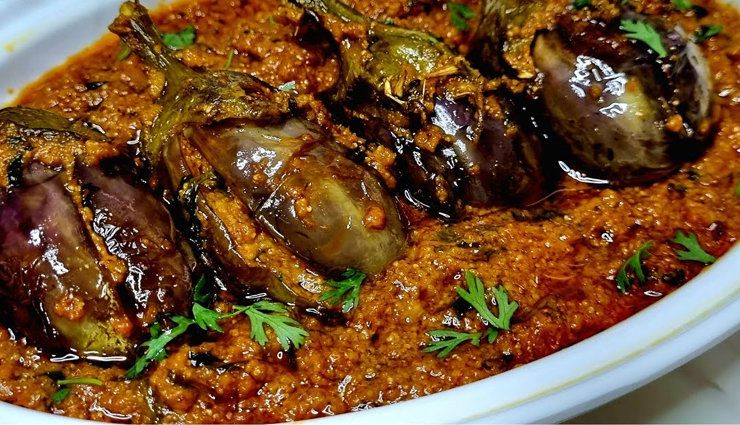
# Bharli Vangi
Bharli Vangi, also known as Stuffed Brinjal or Stuffed Eggplant, is a traditional Maharashtrian dish that showcases the flavors and culinary heritage of Maharashtra. It is a flavorful and aromatic dish made with small brinjals (eggplants) that are stuffed with a spiced coconut-based filling. Bharli Vangi is known for its rich flavors and aromatic profile. The combination of spices, coconut, and the natural sweetness of the brinjals creates a harmonious blend of tastes that is both satisfying and flavorful. The dish is often garnished with fresh coriander leaves and served with steamed rice or Indian breads.The stuffing for Bharli Vangi is made from a combination of ingredients, with the key component being fresh coconut. The coconut is finely grated and combined with a blend of spices such as coriander seeds, cumin seeds, turmeric, red chili powder, and other seasonings. Additionally, tamarind or lemon juice may be added for a hint of tanginess. The spiced coconut mixture is then stuffed into the brinjals, infusing them with a burst of flavors.
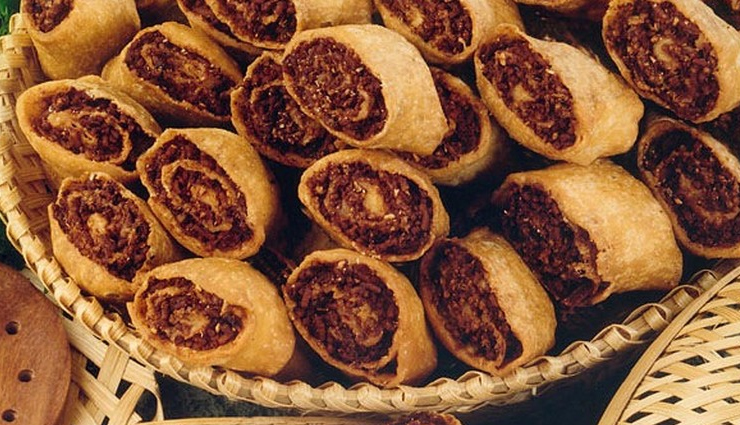
# Bhakarwadi
Bhakarwadi holds cultural significance in Maharashtra and is considered a traditional Maharashtrian snack. It represents the culinary traditions of the state and is often prepared during festivals like Diwali and Ganesh Chaturthi. It is also a popular choice for gifting during festive seasons. Bhakarwadi features a crispy and flaky outer covering made from a mixture of all-purpose flour (maida), semolina (sooji), and spices. The dough is rolled out thinly, filled with the spicy mixture, and then tightly rolled into a spiral shape. The rolled dough is then cut into small pieces and deep-fried until golden brown, resulting in a crispy and irresistible texture. The filling of Bhakarwadi is the highlight of this snack. It is a combination of various spices, herbs, and condiments that create a burst of flavors. The filling typically includes ingredients like roasted sesame seeds, desiccated coconut, chili powder, coriander, cumin, fennel seeds, turmeric, tamarind, and jaggery. This blend of spices and tangy elements creates a perfect balance of flavors, with a hint of sweetness from the jaggery and a tangy kick from the tamarind.
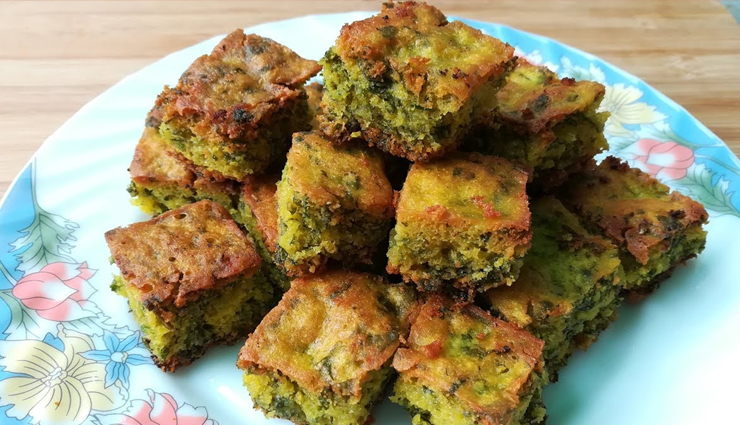
# Kothimbir Vadi
Kothimbir Vadi is a popular Maharashtrian snack that is known for its unique flavors and crispy texture. It is made from a mixture of fresh coriander leaves (kothimbir), besan (gram flour), and spices. Kothimbir Vadi is steamed and then shallow-fried until golden brown, resulting in a savory and aromatic snack. Kothimbir Vad can be enjoyed on its own with a cup of tea or as a side dish with a meal. The crispy texture and savory flavors make it a popular choice among Maharashtrians and food enthusiasts alike. Kothimbir Vadi is deeply rooted in Maharashtrian cuisine and holds cultural significance in the region. It is often prepared during festivals, celebrations, and special occasions, as well as offered as prasad (blessed food) in temples. It represents the culinary traditions and flavors of Maharashtra, showcasing the creative use of coriander and gram flour in local recipes.
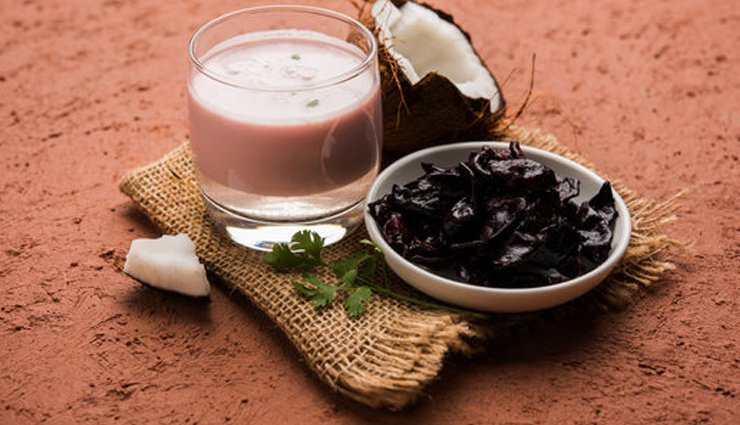
# Solkadhi
Solkadhi is a traditional and refreshing drink from the coastal regions of Maharashtra, particularly popular in the Konkan region. It is made using two main ingredients: kokum (Garcinia indica) and coconut milk. Solkadhi is known for its tangy and slightly sour taste, making it a perfect accompaniment to spicy and flavorful Maharashtrian cuisine. The key ingredient of Solkadhi is kokum, a fruit native to the coastal areas of Maharashtra. Kokum imparts a distinct tangy and sour flavor to the drink, which is balanced by its natural sweetness. The outer skin of the kokum fruit is used to make a concentrated extract or syrup, which is then diluted with water to create the base of Solkadhi. Coconut milk is another essential component of Solkadhi. It adds a creamy and rich texture to the drink, complementing the tanginess of kokum. Freshly extracted coconut milk is preferred to achieve the authentic taste of Solkadhi. The combination of kokum and coconut milk creates a unique flavor profile that is both refreshing and soothing.
Solkadhi holds cultural significance in the coastal regions of Maharashtra, where it is considered a staple part of the local cuisine. It is not only enjoyed as a refreshing drink but also considered a natural remedy for various ailments. Solkadhi is often served in traditional Maharashtrian thalis (platters) and is an integral part of festive meals and celebrations.





